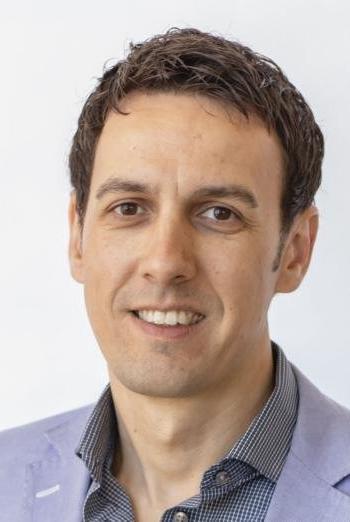Eric流行
2D材料有什么好处?
This talk will present my (biased) perspective of what two-dimensional (2D) materials 可能对你有好处. For example, they may be good for applications where their ultrathin nature and lack of dangling bonds give them distinct advantages, such as flexible electronics [1] or DNA-sorting nanopores [2]. They may not be good for applications where conventional materials work well, like transistors thicker than a few nanometers. I will focus on 2D materials for 3D heterogeneous integration of electronics, which presents significant advantages for energy-efficient computing [3]. 在这种情况下, 2D materials could be monolayer transistors with ultralow leakage [4] (taking advantage of larger band gaps than silicon), used as access devices for high-density memory [5]. Recent results from our group have shown monolayer transistors with record performance [6,7], which cannot be achieved with sub-nanometer thin conventional semiconductors, but are nevertheless thermally-limited [8]. I will also describe some less conventional applications, using 2D materials as good thermal insulators [9] and as thermal transistors [10]. These could enable control of heat in “thermal 电路” analogous with electrical 电路. Combined, these studies reveal fundamental limits and some unusual applications of 2D materials, which take advantage of their unique properties.
参考文献: [1] A. Daus等.,自然电气. 4, 495 (2021). [2] J. Shim等人. 纳米尺度9,14836
(2017). [3] M. Aly等人.,计算机48,24 (2015). [4] C. 贝利等人., emc (2019).
[5] A. Khan等人. 科学373,1243 (2021). [6] C.
英语等., IEDM, 2016年12月. [7] C. 麦克莱伦等. ACS Nano 15,1587 (2021).
[8] A. Gabourie等人., J. :. 理论物理. 131, 195103 (2022). [9] S. Vaziri等人.、科学
阿德. 5、eaax1325 (2019). [10] A. good等。. 自然通讯. 9, 4510 (2018).

传记
Eric流行 is a Professor of 电气工程 (EE) and Materials 科学 & 工程 (by courtesy) at Stanford, where he leads the SystemX Heterogeneous Integration focus area and the EE Culture, Equity, and Inclusion committee. 他的研究兴趣包括 nanoelectronics, data storage, and energy. Before Stanford, he spent several years on the faculty of UIUC, and in industry at Intel and IBM. 他获得电子工程博士学位 from Stanford and three degrees from MIT in EE and 理论物理ics. 他的奖项包括 PECASE from the White House, and Young Investigator Awards from the Navy, Air Force, NSF CAREER和DARPA. He is an IEEE Fellow, an Editor of 2D Materials, and a Clarivate 高被引研究者. In his spare time he enjoys snowboarding and tennis, and in a past life he was a college radio DJ at KZSU 90.1. 更多有关 流行的实验室 以及推特上的@profericpop.